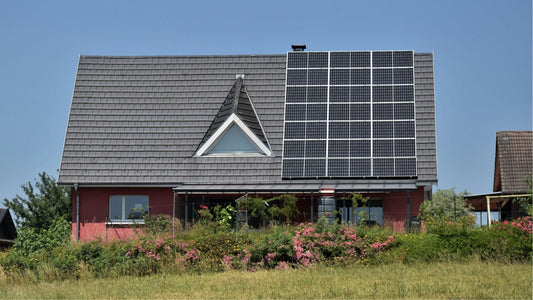Are you curious about the magic behind turning direct current (DC) power into alternating current (AC) power? Look no further! In this comprehensive guide, we will take you on an enlightening journey into the world of inverters, the unsung heroes of power conversion. Whether you're venturing into solar energy systems, setting up an off-grid power solution, or simply seeking backup power during emergencies, understanding the basics of inverters is crucial.
Understanding Power Conversion
To comprehend the role of inverters, let's start by understanding the difference between DC and AC power. Direct current flows in a single direction, while alternating current constantly changes direction. While DC power is commonly stored in batteries and generated by renewable energy sources like solar panels, AC power is what powers our homes and most electrical appliances. Inverters bridge the gap between these two power types, converting DC power into the AC power we rely on.
Basic Components and Working Principles
Inverters consist of several key components, including power electronics, transformers, and control mechanisms. Power electronics play a vital role in converting DC power to AC power through a two-step process. First, DC power is converted into high-frequency AC power. Then, this high-frequency AC power is transformed into a stable and clean AC waveform suitable for powering various devices.
Types of Inverters
There are different types of inverters available to suit various power needs:
-
Grid-Tied Inverters: These inverters are primarily used in grid-connected solar systems, feeding excess power back into the electrical grid.
-
Off-Grid Inverters: Off-grid inverters are designed for standalone power systems, allowing you to generate and use power independently, without relying on the grid.
-
Hybrid Inverters: As the name suggests, hybrid inverters combine the capabilities of grid-tied and off-grid inverters. They enable you to use both renewable energy sources and grid power, providing flexibility and backup options.
Key Features and Considerations
When choosing an inverter, it's important to consider several key features and factors:
-
Power Output and Load Capacity: Determine the power output and load capacity requirements of your devices to ensure the inverter can handle the demand.
-
Efficiency and Energy Conversion: Look for inverters with high efficiency ratings to maximize the conversion of DC power into usable AC power.
-
Waveform Types: Pure sine wave inverters provide a clean and stable power output, ideal for sensitive electronics, while modified sine wave inverters are more economical but may not be suitable for certain devices.
-
Advanced Features and Monitoring Capabilities: Some inverters offer advanced features such as integrated battery charging, remote monitoring, and data logging, providing enhanced control and visibility over your power system.
Applications of Inverters
Inverters find applications in various settings:
-
Residential Solar Systems: Inverters are essential components of residential solar systems, converting the DC power generated by solar panels into usable AC power for your home.
-
Commercial and Industrial Applications: Inverters play a crucial role in powering commercial buildings, industrial equipment, and large-scale renewable energy projects.
-
Emergency Backup Power: Inverters combined with battery storage provide reliable backup power during grid outages or emergencies, ensuring continuity of essential devices and systems.
Choosing the Right Inverter
To select the right inverter for your needs, consider the following:
-
Evaluating System Requirements and Load Demands: Assess your power needs, including the number and type of devices you want to power, to determine the appropriate inverter capacity.
-
Budget Considerations and Available Options: Consider your budget and explore the available inverter options that meet your requirements.
-
Comparing Specifications and Performance Metrics: Compare inverter specifications such as efficiency, power output, surge capacity, and warranty to make an informed decision.
Installation and Maintenance Tips
Proper installation and maintenance are crucial for optimal performance and safety:
-
Proper Installation Practices: Follow manufacturer guidelines for correct installation, including proper wiring, grounding, and protection against environmental factors.
-
Wiring, Grounding, and Safety Considerations: Ensure all wiring connections are secure, use appropriate grounding techniques, and adhere to safety standards.
-
Routine Maintenance Tasks and Troubleshooting: Perform routine maintenance tasks such as cleaning and inspecting the inverter, and troubleshoot any issues promptly.
Congratulations! You've now gained a solid understanding of inverters and their role in power conversion. We've covered the basics, including power conversion principles, types of inverters, key features to consider, and their applications in various settings. Armed with this knowledge, you're ready to make an informed decision when selecting the right inverter for your specific power needs. Remember to evaluate your requirements, compare specifications, and prioritize efficiency and reliability. With the right inverter, you can enjoy efficient power conversion, harness renewable energy, and ensure a reliable power supply for your home, business, or off-grid adventures.




